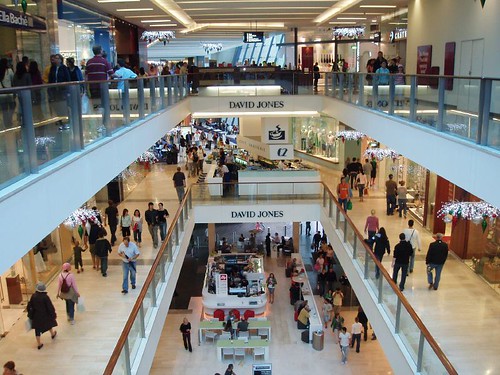During the COVID-19 pandemic, malls and stores were shut down, and shoppers had no choice but to begin buying exclusively online. After the pandemic, store traffic started to rise again by the end of 2021, and in 2022, physical store sales surpassed 2020 levels by over 15%, according to Forbes. However, online shopping has remained a popular choice for most people, years after the pandemic.
Malls are a prime example of the decline in in-person shopping, mostly due to the rise of online shopping. According to PBS, online shopping has doubled in the past seven years, and teenagers who used to socialize at the mall now spend all their time on social media instead. According to PBS, 15% of malls are expected to close in the next 10 years.
Online shopping increases convenience for consumers, providing the opportunity for 24/7 shopping, whereas a physical retail store is only open for certain hours. It also relieves shoppers of having to deal with crowded stores, long lines and the effort of making a trip to the store. Instead, they can simply have items delivered directly to their doorstep.
Despite this, online shopping has proven to be extremely dangerous. According to Time Magazine, online shopping can be overwhelming and addictive to your brain. By having the ability to shop and spend money whenever and wherever you want, online shopping creates an addictive habit.
Shopping in person, especially with clothing, offers a tangible experience where shoppers can try items on and feel the product for themselves. Furthermore, there are no shipping costs, and customers don’t have to wait for their product to be delivered, providing instant satisfaction. Consumers can access better customer service when shopping in the store, as store employees can provide advice and recommendations based on what the customer wants. However, when shopping online, shoppers end up having to worry over whether they ordered the right product and size, or they will be forced to return it. “I prefer in-person shopping because it gives me an opportunity to see the clothes in person and decide if it’ll fit,” junior Charlotte Hoffman said.
People are often choosing to pay less money to get a product ordered from Amazon rather than go out and buy it at a physical store. One negative result is that the increase of online shopping can lead to the bankruptcy of small and medium-sized businesses, according to the University of Connecticut.
One of the main causes of the decline in shopping in person is the rise of Amazon. According to Forbes, Amazon has about a 43% share of all e-commerce. While Amazon’s low prices are great for consumers, this is often harmful for retailers and exploits Amazon workers themselves. According to Amnesty International, Amazon workers in Saudi Arabia were lied to by recruitment agents and cheated out of their wages.
The rise of Amazon has caused large chains such as Barnes & Noble, American Eagle and JCPenney to shut down their stores. By offering lower prices, more options and increased convenience for shoppers, Amazon is effectively becoming a monopoly, shutting out small businesses and other large corporations. “It is more convenient for people to quickly order off of Amazon than make thoughtful purchases,” Hoffman said.







![The 2025-2026 Editorial Board Alex Grainger, Cameron Cowen, Helen Manolis, Emory Scofield, Ahmed Ibrahim, Rebekah Buchman, Marley Hoffman, Hayley Gottesman, Pragna Pothakamuri and Natalie Pak (Chase Dolan not pictured) respond to the new MCPS grading policy. “When something that used to be easy suddenly becomes harder, it can turn [students’] mindset negative, whereas making something easier usually has a better impact. I think that’s where a lot of the pushback comes from. But if you put emotions aside, I do think this change could help build stronger work ethic,” Ibrahim said.](https://woottoncommonsense.com/wp-content/uploads/2025/09/fqr5bskTXpn0LRQMmKErLuNKdQYBlL726cFXBaWF-1200x900.jpg)

